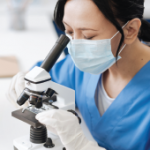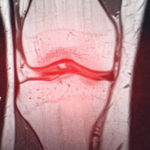The AMP has provided the opportunity for rheumatologists to use advanced technologies on a large scale. “We’re not going to use something just because it is new. We are going to validate it,” explained Dr. Brenner, acknowledging that every technology has its strengths and weaknesses. For now, the RA group has chosen to use Cytometry by Time of Flight (CyTOF) to perform high-dimensional mass cytometry and pair those data with RNA sequencing (RNAseq).
Each patient provides a tissue sample that is used for histology and to prepare a single-cell suspension. The researchers use the single-cell suspension to perform three different analyses: CyTOF, RNAseq of cell subsets and RNAseq of single cells. One patient sample is first used as a source for CyTOF, and after the necessary cells have been allocated for mass spectrometry, 1,000 cells of each different cell subset (T cells, B cells, macrophages and fibroblasts) are collected for low-input RNAseq. Any cells remaining in the sample are then collected into flow cytometry buffer for single-cell RNAseq, with the intention of collecting up to 144 cells from each subset.
Research Phase 0
Phase 0 of the AMP RA/Lupus Network established a consortium infrastructure and standard operating procedure, which included barcoding, sample tracking, institutional review boards and clinical research facilities. This phase also included patient recruitment, biopsy, blood collection, preservation and shipping. All decisions pivoted on a key question: How do you analyze tissue samples across a network? The answer would be critical in determining, “the quality of data that can come out of this pipeline,” explained Deepak Rao, MD, PhD, an instructor in medicine at Brigham and Women’s Hospital and Harvard Medical School, who described the standard operating procedures for RA target-tissue processing and analysis across the network.
The Network was concerned that multiple sites of biopsy would confound biological variation and create a batch effect. Thus, the investigators discussed three different approaches to sample analysis. One approach was to have each site process the tissue and run the analysis. Another option was to have each site process the tissue, freeze the cells and ship the samples to a central site where they would be analyzed. The final option, and the one chosen by the network, was to have each site freeze the tissue and send it to a central site for analysis. This approach was chosen in an effort, “to streamline the pipeline by minimizing the upfront work at the collection site,” explained Dr. Rao. The group feared that if each site had to processes their samples, this would increase the opportunities for batch effects. Alternatively, a plan for centralized processing after tissue collection at multiple sites could, theoretically, minimize batch effects.

